Together for student success through digital literacy: An Adobe Creative Campus Collaboration recap
If you weren’t able to join the Winter Adobe Creative Campus Collaboration event, here are a few key highlights that stood out.
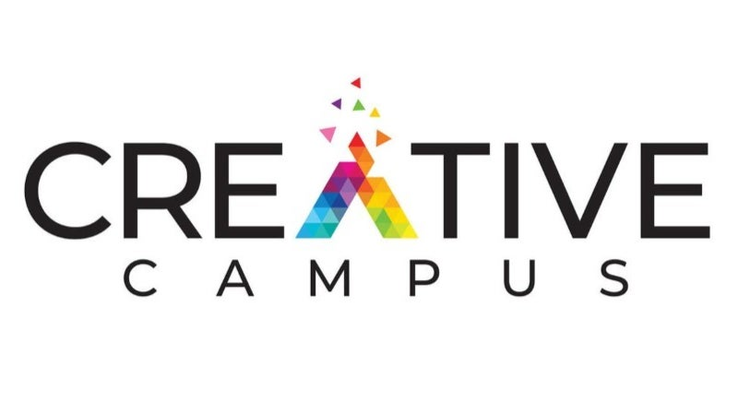
A year has passed since colleges and universities made the rapid transition to remote learning environments due to the pandemic. This change illuminated many challenges in higher education while simultaneously requiring institutions to transform traditional teaching methods.
At the Winter Adobe Creative Campus Collaboration event in late February, more than 150 academic leaders and faculty convened virtually to discuss the unique challenges of remote learning along with some of the brilliant ways they’ve created more inclusive, engaging, and impactful learning experiences for their students.
Students from different academic disciplines also joined us and shared how the creative and digital literacy skills they’ve developed have helped them achieve goals both in school and in their budding careers.
If you weren’t able to join the event, below are a few key highlights that stood out to me, which may inspire new ways to embrace all the changes we’re facing in higher education:
Prioritizing student access to digital tools
The swift move to remote learning forced academic leaders to identify and remedy long-standing gaps in student access to digital tools. Nearly a year later, access continues to be a major challenge that higher education institutions must address in order to help set up students for success in the workforce.
Leaders from Winston-Salem State University (WSSU) kicked off the day-long event by sharing with us a few ways they’ve improved access and outcomes for their students. Dr. Wanda White, director of the Center for Innovative and Transformative Instruction at WSSU, explained that the chasm of disparity among students enrolled in HBCUs is typically greater than for students at non-HBCUs.
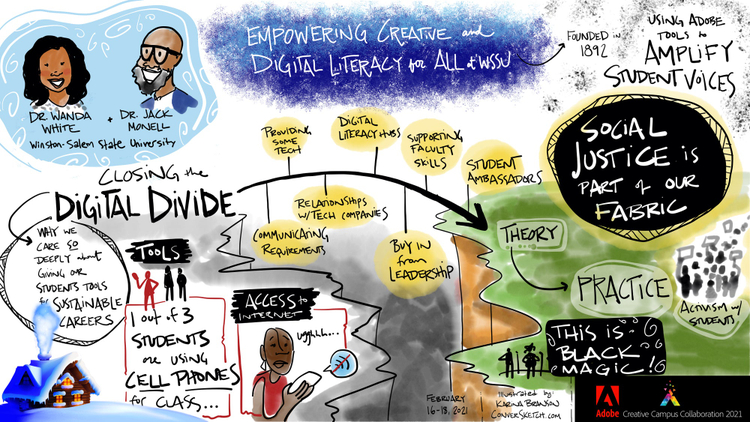
Image by Karina Branson.
Many WSSU students live in rural areas of North Carolina and initially lacked the internet connectivity, devices and software required to remain fully engaged in their studies. To address this need, Dr. White and her team first worked to ensure that students had all the basic requirements, like hotspots and the necessary learning platforms, but also ensured that her students had the creative tools — like Adobe Creative Cloud — that would drive better engagement and digital literacy. Dr. White also emphasized the need for faculty to become digitally fluent in these tools themselves in order to drive better student outcomes.
“We want to level the playing ground for students so they can become competitive, and when they graduate, they graduate with digital acumen,” Dr. White said.
Inspiring student engagement across the curriculum
With increased access to digital tools, many colleges redesigned their teaching practices to drive better student engagement through creative approaches to assignments. In the session, “Inspiring Creativity, Innovation and Student Engagement Across the (Digital) Curriculum,” faculty and staff from the University of Texas at San Antonio (UTSA) discussed the creation of an interdisciplinary project, which prompted first-year students to tell a story about the political election or social justice issues using Adobe Creative Cloud.
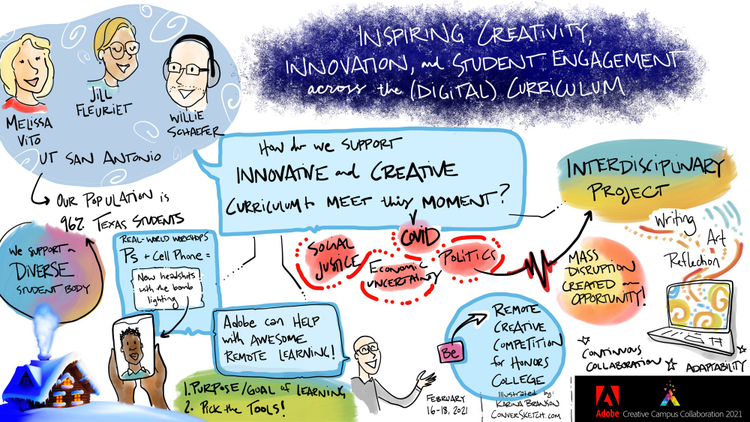
Image by Karina Branson.
The success of this project inspired Dr. Melissa Vito, associate provost of UTSA, to identify ways more college courses can adopt hybrid models in a post-pandemic world.
“As we move forward, we’re thinking about how we maintain the momentum we’ve established during this time, where we continue to inspire creativity,” Dr. Vito said. “The way we think about our physical classrooms and our spaces is going to be shifting and changing as they become more of collaboration areas.”
An aspiring astrophysicist’s journey: Something from Nothing
When students develop digital literacy skills early on in their academic careers, it gives them the foundation they need to find their purpose. This rings true for Hillary Andales, a sophomore at Massachusetts Institute of Technology (MIT), who served as our student keynote speaker.
While growing up in the Philippines, Andales developed an early interest in math and science. However, she had a deep interest in design and was committed to debunking the myth that STEM students can’t also be creative. Andales explained that her journey to becoming creative began when she first taught herself how to use Adobe Photoshop and InDesign, which gave her the foundational skills she needed to develop everything from a workbook filled with 240 math problems to the layout template for her school’s newspaper.
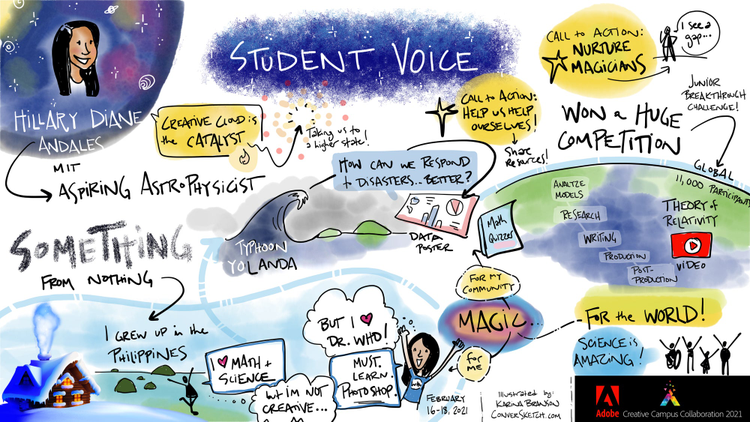
Image by Karina Branson.
By refining her critical-thinking and communication skills, Andales gained the confidence she needed to enter into an international science competition, for which she created a video that explained the concept of relativity. Out of 11,000 students, Andales won the competition and a monetary prize, which she used to fund her higher education. The experience ignited her passion for science communication and led to her enrollment at MIT, where she continues to use her digital literacy skills.
“We need a generation of Magicians. We need people who can create something from nothing. We need people who can see gaps and are motivated to fill it. We need people who can create value.” Andales said. “As educators, we need to empower future magicians by training students with the right attitude and tools. This is how we make a better world.”
Employing collaborative learning practices with students
In Montana State University’s (MSU) session, Dr. Molly Todd, discussed how creativity can be leveraged to promote student engagement. She asked her students enrolled in the course, “Images & Power: From Battlefield to Archive,” to create profiles of local veterans as part of a semester-long project. And, at the end of the semester, students had the opportunity to showcase their work at a public exhibition on campus, which was viewed by more than 300 attendees. The impact of the program ultimately inspired one of Dr. Todd’s students to pursue a career with the local branch of the VA hospital.
“Real world projects with digital applications can have a lifelong impact on students’ lives,” Dr. Todd said. “We should be doing more of this in the classroom.”
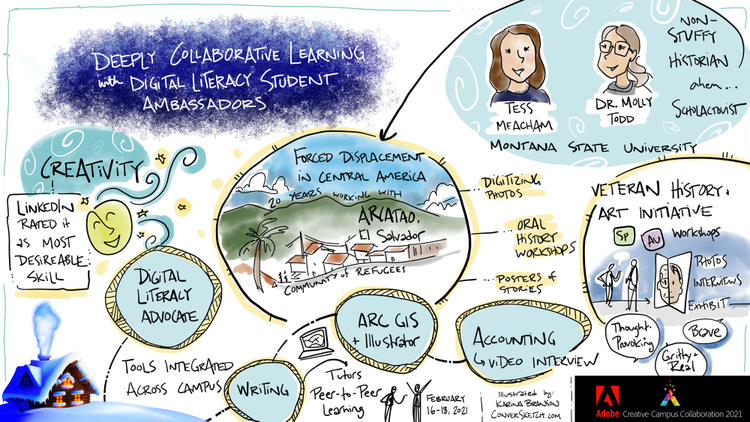
Image by Karina Branson.
MSU hired their own students to serve as “Digital Media Coaches,” who offer group trainings and individual assistance to MSU faculty, staff, and students. The program gives faculty the ability to learn how to integrate Adobe Creative Cloud in their curricula while students can gain a greater understanding from their peers of how to complete their coursework, enhance their classroom engagement, and build digital literacy using these tools.
Fostering educational innovation in the time of COVID-19
Colleges and universities faced unique challenges when making the transition to remote learning environments, which resulted in many institutions implementing new programs to accommodate students during this transitional period. The University of New Mexico (UNM) mobilized quickly to provide access to tools and support for its student population, more than half of which is comprised of Hispanic students. Similar to students from WSSU, many UNM students from minority backgrounds only had access to mobile devices to attend virtual classes and complete their assignments remotely.
UNM recognized that using digital tools wisely was essential to fostering educational innovation and ultimately sustaining student engagement. As a result, the university offered steps to make hardware and software readily available for students in need, whether remote or on campus, and raised awareness of all the scholarship programs available to students.
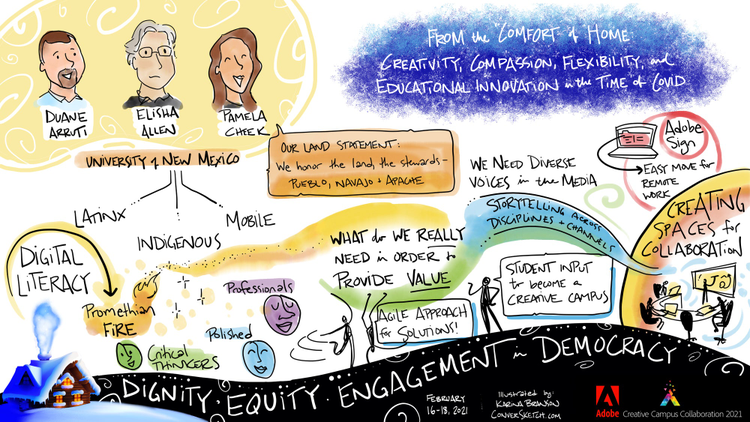
Image by Karina Branson.
A new approach that UNM administrators employed was to assign IT officers to each academic school on campus — specialized and trained to support the specific needs of respective departments. The officers served to familiarize faculty with digital tools, share ways to use these tools in their teaching, and were a resource to students who needed help with new technologies.
Stories that Matter: Digital Storytelling for Change and Social Justice
Over the past several years, college students have become motivated to raise awareness of social injustices impacting our society today through storytelling. As our final session of the day, we hosted a panel titled, “Stories that Matter: Digital Storytelling for Change and Social Justice,” in which students and faculty explained how using Adobe Creative Cloud enabled them to not only build or teach critical skills, but also draw attention to systemic disparities.
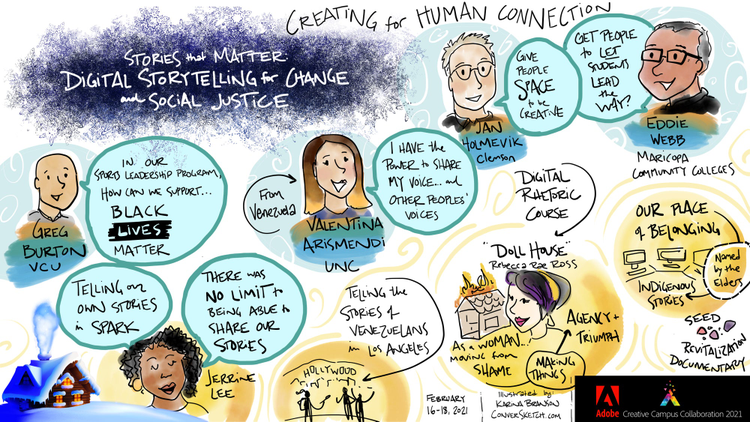
Image by Karina Branson.
Having immigrated to the U.S. from Venezuela as a child, student panelist Valentina Arismendi, who is a senior majoring in media and journalism at the University of North Carolina at Chapel Hill, was deeply committed to raising awareness of immigration stories, the shortcoming of immigration policies and the need for greater reform.
Arismendi developed a visual storytelling project, which documented the lives of immigrant, small-business owners living in Los Angeles. She explained how she combined her visual storytelling skills with the academic skills she learned at UNC to develop the piece, and powerfully illustrated the issues she was passionate about.
For more information on how to integrate digital skills across disciplines and throughout curricula, please visit the Digital Literacy resources page. If you’re interested in learning how your college or university can become a Creative Campus to drive greater academic and professional success, please contact your sales representative.